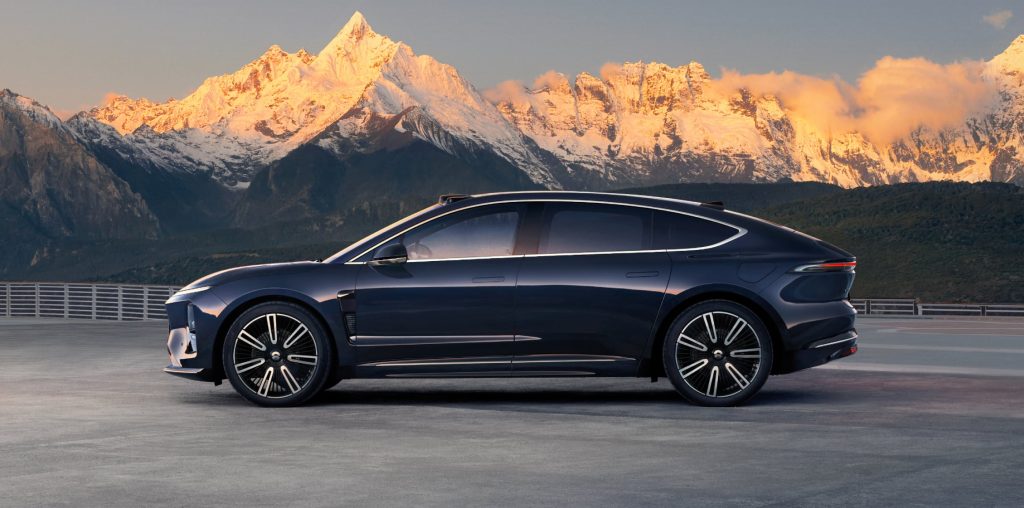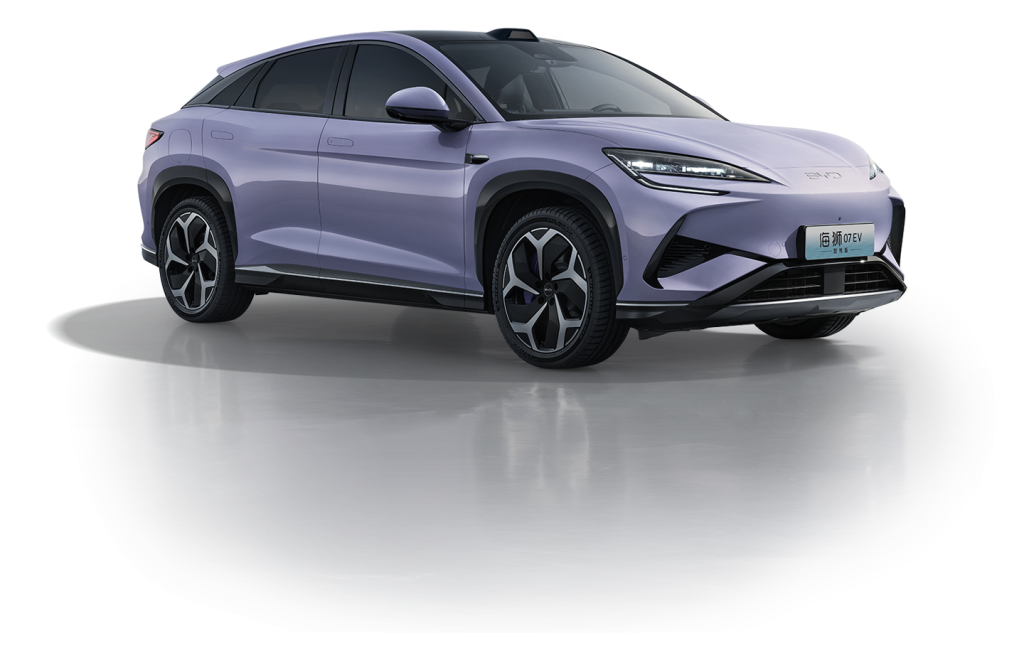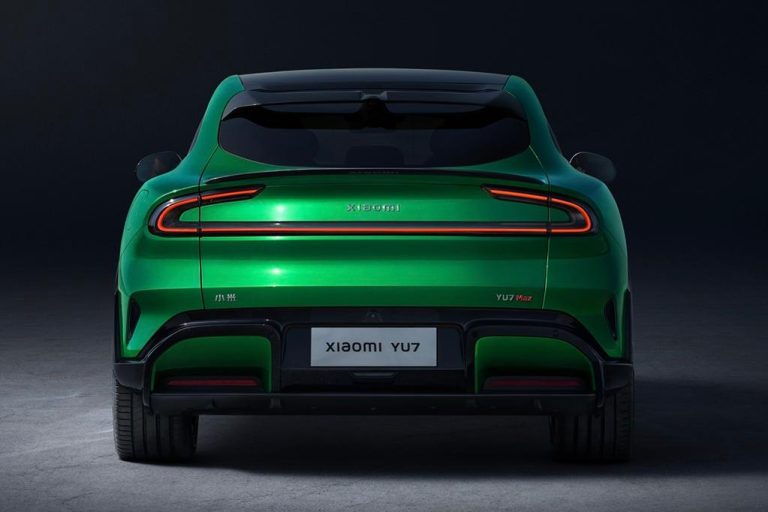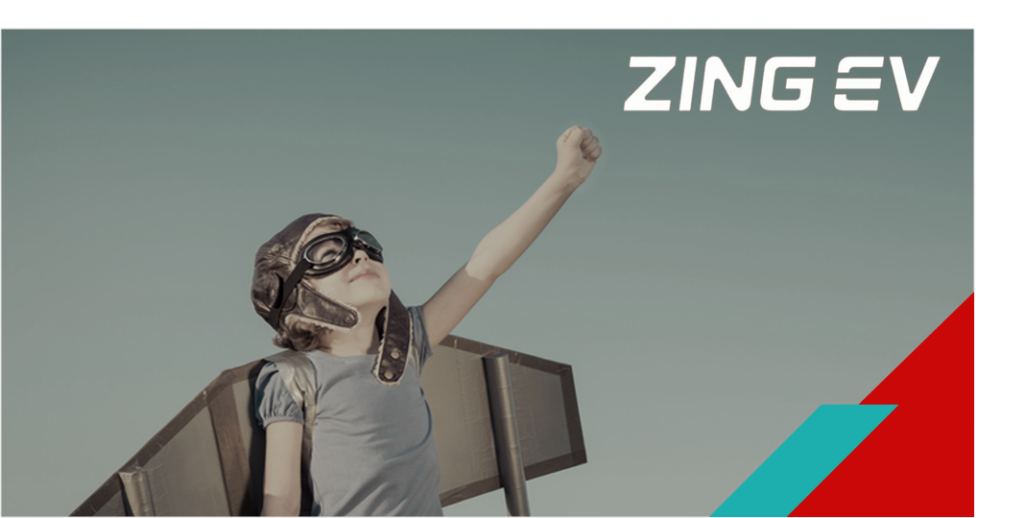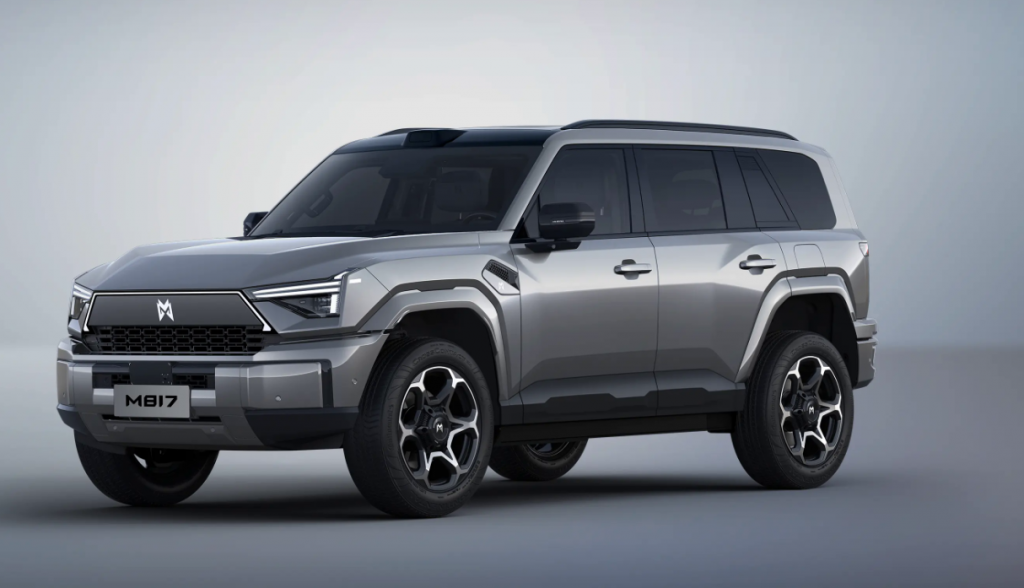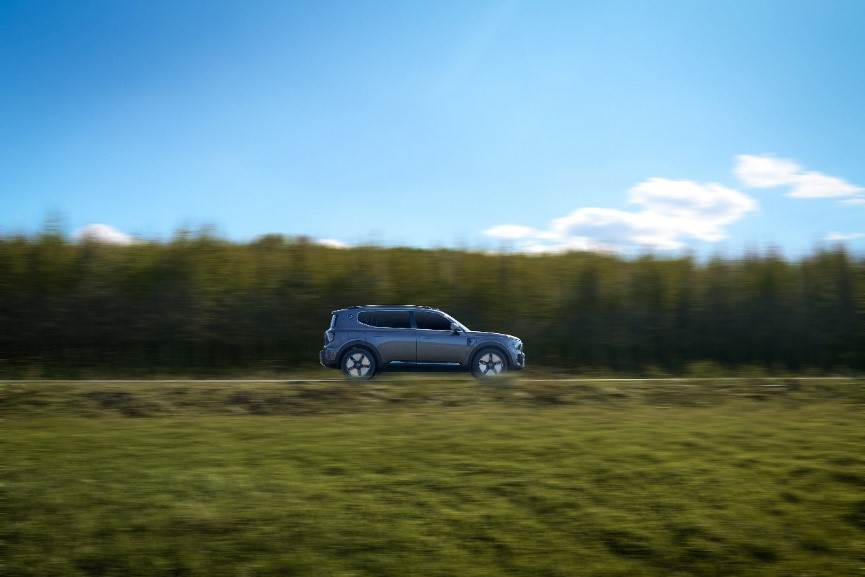Key Points
- The appeal to accelerate the construction of charging infrastructure and improve its functions is growing.
- The system needs to incorporate the concept of digital technology, strengthen traceability and management throughout the process, and improve energy utilization efficiency.
- The management and monitoring of carbon emissions need to be extended to the entire value chain.
- The increase in the penetration rate of new energy commercial vehicles is of great significance to the automotive industry in achieving the dual-carbon goals.
- Emphasize standardized production, and achieve high quality and efficiency through data integration.
I. Volkswagen Group
Ralf Brandstätter, CEO of Volkswagen Passenger Cars Brand / Head of China Sales
Currently, Volkswagen is accelerating its transformation into the era of electrification, intelligence, and connectivity, while maintaining its leading position in China’s automotive market. In 2022, the group’s overall deliveries of battery electric vehicles in the Chinese market increased by 68%, and deliveries of the ID series doubled. By 2022, we had delivered 40 million vehicles in China, which means Volkswagen has gained the trust of more than 40 million users in its 40 years in China. Of course, sales are not the only measure of our success; achieving high-quality, green, and sustainable development is a strategic direction we attach great importance to.

Volkswagen is committed to achieving carbon neutrality by 2050, which sets the standard for our commitment to sustainable development in China. The Volkswagen Group will work with its joint venture partners to achieve the goal of using renewable energy in all its production bases in China by 2030, and we have already made progress towards this goal.
Despite the current short-term slowdown in market demand, we are confident in the market’s continued recovery. Currently, many highly competitive new car-making forces are continuously entering the market, which also inspires us to continue innovating, deepen reforms, and remain sharp to market trends.
We have formulated a clear transformation roadmap. From 2023 to 2027, the group will invest more than 180 billion euros in global markets including China. This move will strengthen the Volkswagen Group’s capabilities in the digital field and product competitiveness in China. By 2024, we will invest 15 billion euros in the field of electric mobility together with our Chinese joint venture partners. By the end of 2030, the Volkswagen Group will complete the electrification of most of its models in China.
In the era of electrification, we firmly implement the “In China for China” strategy.
In addition, under the guidance of the “In China for China” strategy, we are strengthening local software and R&D capabilities. We will continue to enhance the connectivity and digitalization of products. Regional R&D departments, including those of the Volkswagen Brand and Audi’s CAR parts division, will take on more responsibilities. Second, in areas such as batteries. The Volkswagen Group’s software subsidiary CAR has now been established in China, aiming to enable the group to develop software tailored to the needs of Chinese consumers more quickly and efficiently. In addition, we have partnered with Horizon, one of the world’s leading autonomous driving technology providers, to develop at a true Chinese speed. We are also building a complete new energy ecosystem at the new energy vehicle center in Anhui.
To achieve long-term and stable development, we must create excellent electrified products and bring high-quality service experiences to Chinese consumers. We have made considerable progress towards this goal. The Volkswagen ID series and Audi’s e-tron series have driven the group’s strong momentum in electrification, further expanding the portfolio of battery electric models, and launching the first all-electric sedan ID.7 in China.
To ensure that excellent products can bring consumers a convenient and worry-free electric travel experience, we have started to promote the construction of charging infrastructure together with our group’s charging joint venture partner CAMS. Up to now, Volkswagen has joined hands with CAMS to provide convenient charging services to more than 1.5 million Chinese consumers. By 2025, the number of charging terminals we build in China will increase from the current 9,500 to 17,000.
More policy support will be of great benefit to the development of the entire industry. Therefore, we suggest extending the exemption period for NEV purchase tax beyond 2023 and formulating a relatively stable policy framework. Second, strengthen the construction of China’s charging infrastructure, such as increasing the number of charging piles in residential areas. Third, strengthen the stability of the supply of key materials and components such as lithium and chips, and strengthen the layout of intelligent connected vehicles, which will be the future trend of the auto industry.
II. State Grid Corporation of China
Li Ming, Deputy Chief Engineer
State Grid Corporation is the world’s largest public utility, serving more than 1 billion people in 26 provinces across China. The company has practices in promoting the integrated development of green energy and new energy vehicles.
First, fully support the rapid development of new energy vehicles. State Grid Corporation earnestly implements the national development plan for the new energy vehicle industry, makes every effort to ensure power supply, and strongly supports social operators in investing in the construction of charging infrastructure. We focus on guarantee-oriented facilities, actively carry out the construction and operation of charging infrastructure, and provide a strong guarantee for the rapid development of new energy vehicles in China.
- Strengthen power supply guarantee to support the extensive layout of charging infrastructure. We have incorporated the demand for electricity for charging infrastructure into the planning of the distribution network. Proactively extend the investment scope of power supply enterprises to fully support and serve various social entities in building charging infrastructure. In the process of handling electricity services, we have reduced procedures, streamlined processes, and improved efficiency, effectively ensuring the efficient and convenient deployment of various charging piles, and ensuring that charging facilities can be installed, connected, and used properly. 88.7% of public charging facilities in the company’s operating areas are built with social investment.
- We have innovated online integrated services to improve users’ car purchase experience. We have our own online portal for State Grid’s electricity services, linked with carmakers’ platforms and charging operator platforms, and launched a connected service module for private charging pile installation applications, charging services, and value-added services when purchasing a car. Currently, we have cooperated with more than 4,700 4S stores and achieved data integration with 8 carmakers. In 2022, 1.19 million applications for charging pile installation were successfully processed throughout the year, promoting the requirement that 100% of fixed parking spaces in residential areas should have charging facilities or reserve installation conditions, which can greatly improve the convenience of car charging.
- Create high-quality demonstration projects to drive the upgrading of the charging industry. We focus on the NEV service ecosystem, innovate charging technologies and service models, and have built a number of high-quality demonstration projects such as the Tianjin Jinmen Lake Integrated Light-Storage-Charging-Swapping Plant. These projects apply technologies such as multi-energy collaborative networking and micro-energy storage grids, providing replicable and promotable construction models for green charging stations and strong support for the clean and low-carbon development of the NEV charging and swapping industry. Fourth, we strengthen technological standard innovation to promote the standardized development of the industry. We are responsible for the work of five working groups in the field of IC charging facilities, took the lead in releasing three IC standards for EV charging roaming services and information interaction, released the IC Future Sustainable Transportation Strategic Technology Report, carried out research on bidirectional interaction between electric vehicles and the power grid, and completed the vehicle-grid interaction standard system.
The second aspect is the specific practice of interaction between new energy vehicles and the power grid. New energy vehicle charging has timing characteristics, and charging behaviors have strong adjustability and schedulable potential, which can effectively promote new energy vehicles to participate in peak shaving and valley filling, ensure the balance of power and electricity, and improve the overall efficiency of the power system.
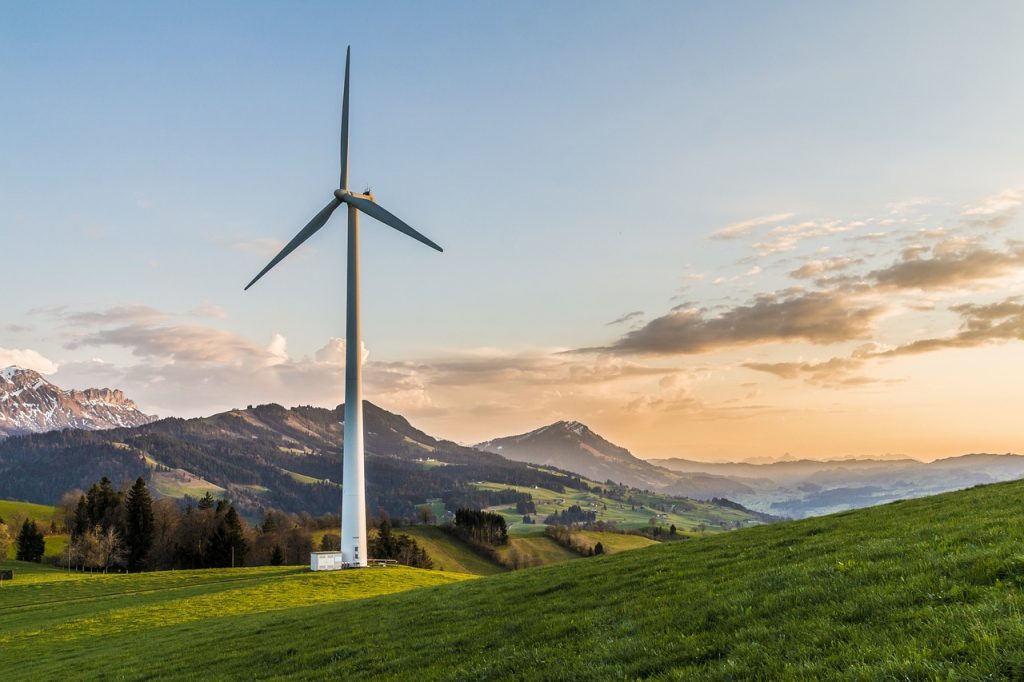
- We promote orderly charging of new energy vehicles in residential areas. The advantages of new energy vehicles are becoming increasingly prominent, and their penetration rate in the private car sector is constantly increasing. Unordered charging will inevitably increase the peak load of residential power distribution, affect the safety of the power grid, and also affect the number of charging piles that can be connected. The adoption of orderly electricity usage, through intelligent means to flexibly adjust the charging time and power of new energy vehicles, can effectively improve the access quality of charging piles and the load rate of distribution bottlenecks. This work has been piloted in Beijing.
- We have explored the participation of new energy vehicles in comprehensive grid regulation. Relying on the smart vehicle-network platform, we have extensively aggregated various charging resources in public, dedicated, and private sectors, and organized new energy vehicles to participate in demand response and peak-shaving auxiliary services of the power grid. In 2022, we joined hands with 24 charging operators such as Teledyne and New Charging, aggregated 5,107 charging and swapping stations, and participated in 49 demand response activities during holidays. The maximum peak shaving reached 22,000 kW, and the affected electricity volume was 640,000 kWh.
The third aspect is that the integrated development of green energy and new energy vehicles has a promising prospect. Developing green energy is the only way to break through global resource and environmental constraints and an inevitable requirement to promote harmonious coexistence between humans and nature. After 11 years of vigorous development, the installed capacity of non-fossil energy power generation in the country has reached 1.27 billion kW, accounting for 49.6% of the total installed capacity. In 2022, the newly added installed capacity of non-fossil energy reached 160 million kW, accounting for 80% of the country’s newly added installed capacity, becoming the absolute main body of newly added installed capacity.
NEVs are an important path to reduce fossil energy consumption in the transportation sector. Under the incentive of national policies and the joint efforts of all sectors of society, new energy vehicles have made great achievements, with ownership exceeding 13 million units, accounting for 4.1% of China’s total vehicle ownership. In 2022, sales exceeded 6.8 million units, with a market share of 25.6%, ranking first in the world for eight consecutive years. Currently, the EU has clarified the timetable for the implementation of carbon tariffs, and China’s carbon market trading is continuing to expand. Green development has become a global consensus and development goal.
III. Analog Devices
Gregory Bryant, Executive Vice President of ADI
Cars have become more intelligent and connected, equipped with many sensors and intelligent devices. They can also be more customized and personalized, providing consumers with a better user experience. In addition, cars are more sustainable. We need some key technologies to better lead the future development of automobiles.
We have launched edge intelligence, which allows us to better connect the physical world with the online world and build a better bridge between reality and the digital world.
First, the ownership of EVs in the entire industry is developing rapidly. In the past five years, it has reached about 16 million units, which means that the demand for incremental sensors will triple. We have also launched ADI’s charging technology, providing the entire industry with excellent precision, which can further extend battery life.
According to our current technology, each full charge can allow the car to travel up to 20% more miles; moreover, our battery technology meets the highest level of automotive safety standards in the industry.
Our platform is also the first to launch a wireless battery management system, further promoting the development of battery technology and better supporting the management of electric vehicles.
In the entire development and development process, we have also carried out close cooperation with SAIC-GM to enable our solutions to provide more accurate services. Moreover, ADI’s software strongly supports more comprehensive services, all of which can better support vehicles.
Another important advantage of BMS is that it can better promote the battery circular economy. Specifically, as more electric vehicles are on the road, it means that the global battery production needs to increase further every year, which also means that we can better control the entire battery life cycle through our technology to promote battery recycling. For example, during battery assembly and integration, through our wireless BMS, we can better understand the performance and status of the battery; during battery use, we can monitor and trace the health status of the battery; after batch utilization, we can also better understand the usage and data of the battery, which will be beneficial to the entire ecosystem.
IV. Volvo Car Group
Yuan Xiaolin, Global Senior Vice President / President and CEO of Asia Pacific Region
Discussions on new energy have focused on topics such as product sales volume, penetration rate, and battery technology, which are indeed very important. However, we should also see that the ultimate goal of new energy vehicle development is to promote the sustainable development of the entire human living environment. In addition to products and markets, supporting facilities, industrial collaboration, and policy mechanisms will play a crucial role in this, which will form a huge ecosystem. Volvo Cars’ efforts in the sustainable field can be summarized by three keywords: foresight, rhythm, and collaboration.
In 2017, we took the lead in proposing a comprehensive electrification strategy, and then further clarified the two strategic goals of becoming a pure electric luxury car company by 2030 and a climate-neutral benchmark company by 2040. Looking back at the history of the automotive industry, Volvo Cars has always been a pioneer in the sustainable field. As early as 1945, we began to use remanufactured parts for automobile production. The three-way catalytic converter with an oxygen sensor invented in the 1970s reduced harmful emissions from automobile exhaust by more than 90%, making it one of the most outstanding representatives of sustainable efforts in the entire industry. Sustainability and safety are the two cornerstones of the Volvo brand. All these foresights reflect our consistent cherishing of the environment over the past century and our vision of creating a better life through technology.
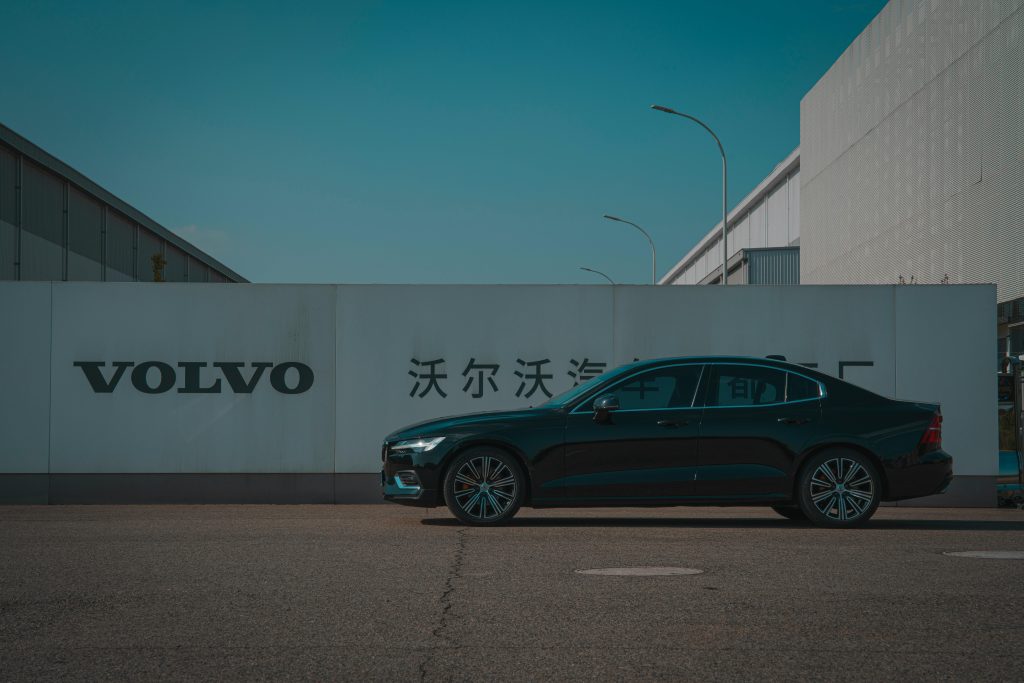
If foresight is the A-side, then rhythm is the B-side of Volvo’s sustainable development efforts, and the two complement each other. In 2021, we achieved electrification of the entire model lineup. In 2022, the all-new pure electric flagship SUV Volvo EX90 was officially launched, opening a new era of our electrification transformation. In the future, Volvo will launch new pure electric products every year. The core of maintaining the rhythm is a pragmatic and rational attitude. In recent years, new energy vehicles have received widespread attention, and their development has been dramatic. The more this is the case, the more we should keep a clear head and follow basic business rules. The development of new energy vehicles will not happen overnight, and we need to have a long-term perspective.
Collaboration is the background of Volvo Cars’ sustainable development. Our short- and medium-term goal is to reduce carbon emissions throughout the life cycle of each car by 40% by 2025 and reduce carbon dioxide emissions throughout the value chain. This goal covers the entire value chain from R&D, production, logistics to sales. Among them, it is particularly critical to fully integrate upstream and downstream partners and form a joint force.
In 2021, we initiated the first Sustainable Development Technology Day in China’s automotive industry, building an efficient communication platform with supplier partners. We have also launched the 2025 100% Renewable Energy Initiative in the Asia-Pacific region with China at its core, encouraging and promoting suppliers to fully achieve the use of renewable energy by 2025. “Each appreciates its own beauty, appreciates the beauty of others, and all beauty coexist harmoniously”—this is the inevitable path to sustainable development.
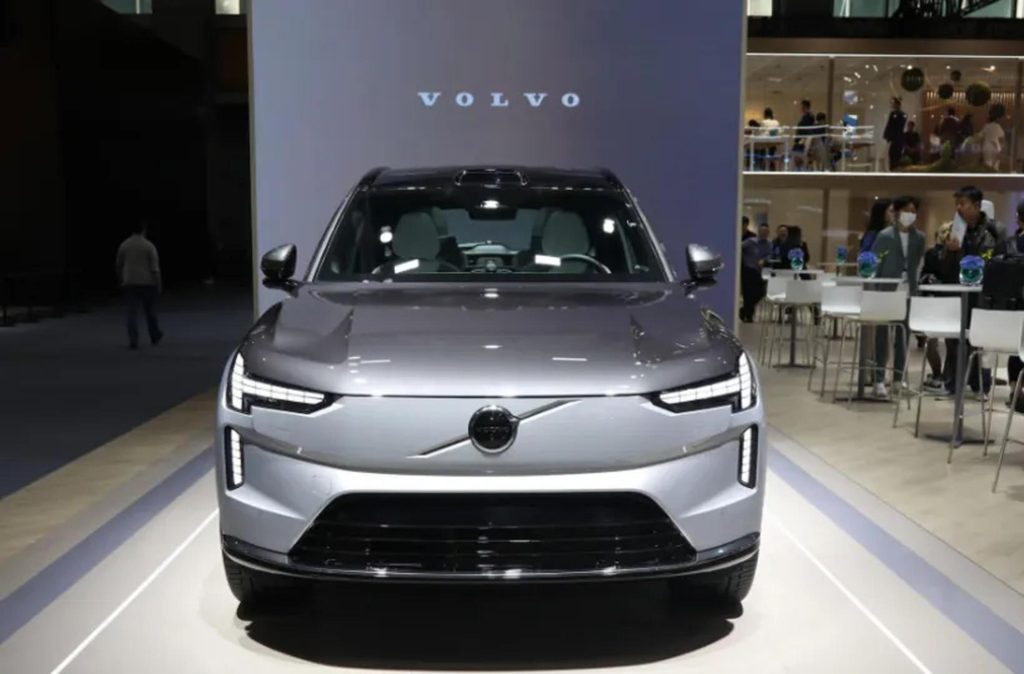
Looking back on these progresses, the core experience is that sustainable development requires the formation of efficient system capabilities. From Volvo’s practice, in addition to the aforementioned establishment of upstream and downstream collaboration mechanisms, how enterprises establish an overall sustainable strategy and how society forms an effective cooperation model around new energy vehicles are also key components.
For enterprises themselves, to achieve true sustainability, it is not only about innovation in electrified products and technologies, but also about paying attention to material recycling, battery cascade utilization and remanufacturing, and reducing waste in the production process. Only in this way can an overall sustainable strategy be formed. Volvo Cars’ 2040 goals include climate neutrality, circular economy, and business ethics and responsibility. The three complement and promote each other, forming a complete strategic system. From the perspective of the entire industry, the construction of a sustainable system is also crucial.
Let me list a pair of figures: we once tested the life-cycle carbon emissions of one of our pure electric products. The average global carbon emissions are 54 tons, which is not significantly better than that of the same fuel version. However, in markets dominated by wind power, this figure is 27 tons. For the same product and the same technology, the carbon emission results vary greatly due to different energy structures.
Here, based on Volvo’s own practices and thoughts, and focusing on the ultimate goal of building a sustainable ecosystem, I would like to put forward several suggestions.
First, it is recommended to establish a life-cycle carbon emission accounting standard system as soon as possible. We should measure automobile product carbon emissions from a life-cycle perspective, guide enterprises to optimize product structures and technological innovation. At the same time, enterprises should be encouraged to participate in charging operations and vehicle recycling, so as to more truly evaluate the carbon emissions of automobile products and promote the further development of low-carbon and environmental protection concepts.
Second, accelerate the construction of charging infrastructure and optimize its layout. China’s charging facilities have grown rapidly in overall scale, but they still face problems such as unbalanced development and lack of incentive measures. It is recommended to provide policy and layout guidance for full coverage of charging in various scenarios, increase encouragement for R&D of charging facility technologies, provide preferential policies for intelligent charging facilities with orderly charging, accelerate the construction of battery swapping and high-power charging facilities, and improve the maintenance and transformation of existing charging facilities.
Third, promote vehicle-grid interaction pilots to promote traffic valley filling and support the reduction of carbon emissions in the entire power industry. This requires guiding the whole society to form a consensus on actively consuming green electricity, establishing an effective operating cooperation mechanism from the perspective of industrial collaboration, and driving industrialization through pilots. All these suggestions clearly show that we must think about and promote the development of new energy vehicles with a systematic mindset.
Finally, we sincerely hope that all sectors of society can work together to form a synergy around the sustainable development of NEVs, make due contributions to the better development of the auto industry, the realization of the country’s dual-carbon goals, and the green and environmental protection of the whole society.
V. BAIC Group
Zhang Xiyong, General Manager
Last year, China’s new energy vehicles showed a good situation of both market scale and development quality improvement. New energy vehicle sales reached 6.89 million units, with a penetration rate of 25.67%, achieving the 25% penetration rate target planned three years ago, marking that the new energy vehicle industry has accumulated scale development effects, entered the popularization stage, and the market has begun to expand rapidly.

From 1992 to 2022, a full 30 years, China’s new energy vehicle development has gone through four stages. China’s new energy vehicles have achieved development from scratch, from small to large, and from weak to strong. We have sorted out the four stages:
The first stage was mainly focused on scientific research, mainly promoted by some national major projects.
The second stage was from 2007 to 2017, when products entered the introduction period, including the thousands of demonstration operations mentioned in the past and government subsidies.
The third stage was the period of market-oriented development and opening up. A landmark event was the transformation of traditional gasoline vehicle enterprises to new energy, and new forces represented by Tesla joined the competition and development of the automotive industry.

The fourth stage is from 2021 to now, with the dual-carbon strategy leading the high-speed development of China’s auto industry. This process is inseparable from the inventions, creations, and technological breakthroughs of engineers, the adventurous spirit and strong dedication of entrepreneurs, the policy support of the government and the continuous optimization of the market environment, and the social responsibility of the majority of consumers with increasing environmental awareness.
China has been the world’s largest producer and consumer of NEVs since 2015, maintaining its leading position in the industry for eight consecutive years. In 2022, among the top 10 global new energy vehicle sales enterprises, China accounted for 3; among the top 10 power battery installed capacity enterprises, China accounted for 6.
Currently, the new energy vehicle industry still faces problems such as “bottlenecks” in key raw materials and chips, costs higher than selling prices, low capacity utilization, and relatively low penetration rate of new energy commercial vehicles, which require continuous efforts from the industry. There is a very realistic problem: electric vehicles are growing but not profitable, while profitable fuel vehicles are not growing. I would like to share two thoughts on this occasion:
First, the regional development of new energy vehicles in China is unbalanced, and the market potential is far from being fully tapped. New energy vehicles are currently mainly concentrated in the south of the Yangtze River and the Central Plains region in North China, while the market penetration rate in Northeast and Northwest China is far insufficient. It is necessary to continue to strengthen the research and development of key technologies for new energy vehicles, further improve the efficiency and power of drive motors, and enhance the adaptability, safety, and stability of electric vehicles to the environment. Different regions in China have different resource endowments, energy advantages, infrastructure capabilities, consumption habits, and usage scenarios. The three technical routes of pure electric, plug-in hybrid (including extended-range, REEV), and hydrogen fuel cell should meet different market demands and be adapted to local conditions.
We should be cautious about the statement that the first half is electrification and the second half is intelligence. Personally, I think this statement one-sidedly separates electrification and intelligent connectivity, which is neither comprehensive nor scientific. China’s NEV industry is still in a growth stage, only entering the stage of large-scale popularization in 2022, still some distance from maturity, and its integration with intelligent connected technologies is still in the early stage, requiring continuous in-depth development.
The second thought is that new energy transformation is revolutionary for the upgrading of commercial vehicles and is of great significance to thoroughly achieve the dual-carbon goals of the automotive industry. Commercial vehicles are an important source of air pollutants and greenhouse gas emissions. Currently, they account for 12% of China’s vehicle ownership but contribute 56% of road traffic carbon emissions, especially heavy-duty trucks, which account for 40% of total automobile carbon emissions.
China’s new energy commercial vehicle market is transforming from the era of high subsidies to the post-subsidy era, ushering in a golden period of development. After a short period of sluggishness, it showed explosive growth last year, with sales reaching 186,000 units, a YoY increase of 54%, especially logistics vehicles achieving rapid growth. Although the overall commercial vehicle market declined in 2022, with policy support, technological optimization, and changes in customers’ psychology under the dual-carbon strategy, new energy commercial vehicles stood out, achieving a high growth rate of 81%, especially new energy heavy-duty trucks achieving a 148% surge. It is expected that by 2030, the market size of new energy commercial vehicles will exceed 1.5 million units, with a penetration rate expected to exceed 30%, which will directly promote the low-carbonization of the transportation structure and directly drive the rapid development of clean energy such as renewable hydrogen.
- After years of technological exploration and market verification, new energy commercial vehicles have accumulated strength and shown a strong momentum, ushering in a golden period of development. New energy commercial vehicles have begun to achieve large-scale sales. In 2022, despite the overall decline of the commercial vehicle market, new energy commercial vehicles achieved growth driven by the Carbon Peaking and Carbon Neutrality Goals strategy.
- With technological iteration and upgrading, new energy commercial vehicles have extended coverage to all regions and all scenarios, with continuous innovation in business models. Pure electric + battery swapping is suitable for short-distance scenarios and medium-heavy models. Technological development is accompanied by the improvement of the industrial chain and continuous innovation in business models such as vehicle-battery separation, battery swapping mode, and battery cascade utilization.
- Intelligent connected technologies are being extended from new energy passenger vehicles to achieve resource sharing. Currently, intelligent connectivity mainly equipped in new energy vehicles has developed rapidly, making cars smarter, while strengthening collaboration with smart energy, smart transportation, and smart cities, promoting cross-industry integrated development. Intelligent connected technologies should be accelerated to extend to fuel vehicles and commercial vehicles to achieve resource sharing.
As the new energy commercial vehicle integration pattern takes shape, traditional enterprises and new forces are rising and accelerating their layout. As an old new energy vehicle enterprise in China and a practitioner of the dual-carbon strategy, BAIC Group is actively promoting the maximization of the industrial chain. Its commercial vehicle brand BAIC Foton has remained the industry leader for ten consecutive years, with its entire product series having achieved new energy transformation. This year’s sales target is 50,000 units, mainly including large vehicles such as logistics vehicles, large buses, and heavy trucks. Next year, we strive to reach 100,000 units. At the same time, we have built a two-way empowerment development pattern of Foton’s basic market and Kaven’s innovative market. Kaven is a newly established platform company, which we established with Bosch Yihuatong and other industrial chain companies. This new new energy platform, including a new platform focusing on electricity and hydrogen, Kaven will focus on new charging fuels and precipitation platforms, strive to build a low-carbon and zero-carbon industrial ecosystem, become a global leader in zero-carbon heavy trucks, and a unicorn enterprise in the new energy commercial vehicle field.
VI. BMW China Automotive Trading Co., Ltd.
Shao Bin, President
We plan to control the average carbon emissions per vehicle throughout its life cycle to at least 40% lower than that in 2019 by 2030. This goal is extremely demanding, covering the entire value chain: about 20% reduction in the supply chain, 80% in production, and at least 40% in the use phase.
In 2021, BMW launched the Green Energy Alliance project to promote the transformation of the entire value chain, including predetermined solutions for production bases, supply chains, dealers, and real estate. BMW’s Shenyang production base has achieved 100% green electricity production. In September 2021, Brilliance BMW purchased 2.78 billion kWh of green electricity. Currently, the production base has 375,000 square meters of solar panels, generating more than 78 million kWh of electricity, reducing carbon emissions by approximately 59,000 tons annually. These measures will meet the production needs of the Shenyang factory by 2025.
In terms of the supply chain, BMW has worked with suppliers to achieve emission reduction goals. For example, in Liaoning Province, the proportion of green electricity used by all suppliers in the region has reached nearly 40%; in terms of dealers, the initiative has received positive responses from the entire network. The BMW Group is fully committed to the electrified development and production of NEVs, with the goal that by 2030, more than 50% of the group’s global sales will be new energy vehicles. In addition to electric vehicles, we also see that hydrogen energy has the potential to become another path to zero emissions. As a multi-functional energy source, hydrogen energy plays a key role in energy transformation and climate protection. We should utilize this potential to accelerate transportation transformation. In terms of new energy power systems, the BMW Group has accumulated more than 40 years of R&D experience, and more than 20 years of experience in hydrogen fuel cell technology. Hydrogen fuel cell electric vehicles are an ideal technology to supplement zero-emission product lines. BMW plans to launch small batches of BMW iX5 hydrogen fuel cell vehicles in several small markets this year for testing and demonstration to show our understanding of this technology.
Finally, I would like to share three suggestions on future paths:
First, we hope the government can accelerate the construction of a unified electricity market, actively create mechanisms for convenient access to green electricity, and expand channels for small and medium-sized enterprises to obtain green electricity.
Second, the integrated development of new energy vehicles and green energy requires joint efforts and coordination of upstream and downstream enterprises to jointly formulate a unified technical route development plan. For the next stage of technological development, such as standards related to high-power electricity consumption, we hope that the direction can be clarified as soon as possible to effectively coordinate the switching of old and new standards.
Third, China has formulated a green hydrogen energy strategy. The BMW Group highly appreciates China’s efforts in promoting hydrogen production and launching a reliable and convenient hydrogen refueling station network. Therefore, we believe that the development of hydrogen fuel cell passenger vehicles will also accelerate.
VII. Huawei Technologies Co., Ltd.
Hou Jinlong, President of Huawei Digital Energy Technologies Co., Ltd.
We believe that there are two certain trends in the 21st century: the first is digitalization, and the second is low carbonization.
The integration of four technologies—digital technology, power electronics technology, thermal management technology, and energy storage management technology—is considered a key technology driving the automotive industry to achieve electrification and intelligence.
In 2021, Huawei integrated its energy businesses to integrate relevant technologies, establishing Digital Energy Technologies Co., Ltd., aiming to increase strategic investment and promote the development of the industry through our technologies in the low-carbon era. Therefore, this company is mainly committed to integrating digital technology and power electronics technology.
Anxiety about charging, range, and low cost performance are the three major issues affecting users’ choice of new energy vehicles.
First, we believe that the layout of charging infrastructure is largely unbalanced, with short service life, inconvenience, and poor user experience. Second, long-distance travel in pure electric vehicles is difficult to guarantee, including factors such as highways, gas supply, low-temperature scenarios, significant reduction in range, and high vehicle energy consumption, which exacerbate users’ range anxiety. In addition, we also see that for the popularization of electric vehicles, especially in Class A vehicles, users hope for lower prices, more functions, and better performance.
In the field of intelligent electric vehicles, to accelerate electrification and improve the cost performance and competitiveness of Class A pure electric vehicles, we launched the world’s first ultra-integrated multi-in-one system in 2020. It features small size and light weight, providing users with the price of a Class A vehicle, the space and power experience of a Class B vehicle, and helping automakers save development costs and shorten the development cycle. During the Shanghai Auto Show in April this year, we will also release the latest ultra-integrated product.
To address range anxiety, we have built the industry’s mass-produced high-efficiency high-voltage electric drive system from the device, system to vehicle levels, with a CLTC efficiency of 92%.
This year, we will also release the 2nd gen. high-voltage platform and power solutions supporting high-voltage ultra-fast charging.
Charging facilities should be positioned as the social infrastructure, which should balance social and economic benefits, achieve unified planning, unified standards, unified construction, and unified operation, so that there should be charging wherever there are roads.
To create charging infrastructure with an simple architecture, extremely high quality, and an ultimate experience, we adopt an all-liquid-cooled, optical storage integrated ultra-fast charging architecture. The architecture is upgraded for future evolution, with the goal of “letting new energy vehicles use new energy electricity”. It features a DC bus architecture, optical storage and charging integration, ultra-fast integration, all-liquid-cooled host and terminal, a failure rate of <0.5%, a service life of 10+ years, a host power of 720kW, a single gun power of 60-480kW, 5-minute energy supplement for 200km, and noise ≤55dB.
IX. LG Energy Solution
Choi Seung-eun, Senior Vice President
There are two areas: one is about our business, and the other is our commitments and efforts in ESG.
In our business field, first, we will focus on building advanced automobiles; second, we will focus on the integration of mobility and IT technologies; finally, we will focus on building our energy storage systems.
Currently, we have manufacturing facilities in four countries, including South Korea, China, Poland, and the United States, with 34,000 employees worldwide and sales reaching nearly 20 billion US dollars. We continue to expand our R&D scope, including our manufacturing and sales performance. We have the largest manufacturing center in China, our second largest in Poland, and we are also continuously expanding into the North American market such as Canada and the United States, as well as the Indonesian market. Our goal is to achieve 540GWh by 2025.
We will also involve ourselves in four key areas of future electrification transformation. First, regarding driving range, our goal is to increase the range to around 700-800 kilometers. Second, fast charging is actually the most important development goal in this field. Cost is also very critical, and we hope to achieve price parity for electric vehicles. We are also further developing more technologies to ensure the safety performance of electric vehicles, so we are also developing our own battery packs, including more TPS-related safety performance.
Recently, we have built smart factories with more advanced manufacturing capabilities. Through digital technology and the development of information technology, we have achieved more automated and intelligent manufacturing processes. We will integrate our global business, improve capabilities in automation and intelligence, and achieve higher quality and productivity through more data integration. We also hope to achieve standardization across all global factories and promote digital production in all of them.
We also have a social responsibility slogan, which is that we hope to achieve a better future through charging.
We are the first battery manufacturer in South Korea to join the RE100 initiative. LG Energy Solution hopes to achieve 100% renewable energy 20 years ahead of schedule. As of last year, about 60% of our energy consumption came from renewable energy. First, the renewable energy initiative started from our factory in Poland, then our US factory took action in 2020, and by 2025, our production bases in China and South Korea will do the same. Our ultimate goal is to achieve 100% renewable energy by 2030.
At the same time, we also have BaaS (Battery as a Service), a business model centered on batteries. We hope to further expand the scale of the electric vehicle market and increase the value that batteries create for society. Therefore, LG Energy Solution hopes to provide users with better services covering the entire life cycle of batteries. Based on our circular economy system, especially building a battery circular economy, we hope to realize battery reuse and recycling, and we are building a battery circular economy ecosystem, which we hope to fully establish by 2025.
Morning Electric Transformation Forum
- President Li Yizhong “Promoting the Integrated Development of Automobile ‘Dual-Carbon’ and Energy Transformation”
In 2022, the number of vehicles in ownership was 320 million, with fuel vehicles accounting for 96%, consuming more than 260 million tons of gasoline and diesel annually. A 1% reduction in fuel consumption can reduce CO2 emissions by 7.5 million tons.
In the medium and long term, electric vehicles will become the main aspect of “carbon reduction”. However, in 2021, thermal power accounted for 66.6% of China’s power generation. An electric vehicle with 15 kWh per 100 kilometers corresponds to 8.5 kg of carbon emissions. A fuel vehicle consumes 6.3 L of fuel per 100 kilometers, corresponding to 13.2 kg of carbon emissions per 100 kilometers. Pure electric vehicles also have a 40% emission reduction effect. Attention should also be paid to emission reduction in manufacturing, use, scrapping, and recycling.
In terms of life-cycle carbon emission distribution, the use stage accounts for 46.2% for EVs and 24% for ICEs. Lightweighting: optimize structures, reduce weight, and increase recycling rates. Power batteries: reduce manufacturing energy consumption, and retired batteries can be used in cascade. Waste vehicles: remanufacturing and recycling of components can reduce carbon by 70%.
Intelligent connectivity is a new driver for carbon reduction. Vehicle-road coordination can improve traffic efficiency by 20%-30%, reducing carbon emissions. It is predicted that the penetration rate of L3 will reach 70% by 2030.
Institutions predict that by 2030, the number of vehicles in ownership will be 450 million, with 100 million electric vehicles, and carbon emissions will rise from 800 million tons in 2022 to 1000 million tons, reaching the peak. Therefore, electric vehicles still have great development space, and there is no need to worry about overcapacity too early.
- Huang Xuenong, Director of the State Energy Administration Supervision Bureau——””
The Energy Bureau has recently been promoting and implementing the suggestions mentioned by Minister Li, and also vigorously promoting the construction of charging infrastructure.
- Chen Qingquan, Academician of the Chinese Academy of Engineering——”Engineering Technology Innovation, Automobile Revolution, and Integration of Four Networks and Four Flows”
Engineering technology and science: science is knowledge, truth, and discovering the laws of nature. Engineering integrates science, technology, and management to solve practical problems.
Build a multi-source complementary, source-grid-load-storage coordinated, flexible and intelligent system. Intelligent vehicles – smart transportation – smart city – smart society. The core goal is: people-oriented, harmonious society between humans and nature. Compared with the previous three networks, the four integrations add humanistic integration.
The first half is electrification, including power batteries and lightweighting. Intelligent connectivity is the second half, relying on good products to integrate transportation networks and energy networks. Intelligent connected vehicles need to redefine automobiles, which are a fusion of mechanical and electronic products. They are moving from a means of transportation to an intelligent mobility space. Traditional cars are product-driven, with sales driving development. New cars are service-driven. The second half is chips + operating systems, and soft services have expanded the industrial chain. The EU’s Industry 5.0 and Japan’s Society 5.0 are based on Germany’s Industry 4.0, adding humanistic revolution and environmental revolution. It is necessary to deeply integrate the physical world, information world, and humanistic world, and effectively convert data into information, knowledge, and intelligence to solve complex problems.
- Ma Yongsheng, Chairman of Sinopec – “Deepening Supply-Side Structural Reform to Boost Transportation Energy Transformation”
Accelerate the building of a modern comprehensive energy service provider. New energy has developed at an internationally leading speed and scale, with ownership exceeding 13.56 million units last year, and pure electric vehicles exceeding 10 million units.
Sinopec will give full play to the advantages of its network of more than 30,000 gas stations, which is the largest in China with the best locations. It has built 2,299 battery swapping stations and 98 hydrogen refueling stations. It is actively transforming into a comprehensive energy supplier, covering refueling, gas filling, battery swapping, and hydrogen refueling in the future. It has put into operation China’s first methanol-to-hydrogen and hydrogen refueling integrated station to explore feasibility, which features small size and high deployment efficiency.
Anchoring the goal of becoming China’s number one hydrogen energy company, strengthen investment in the integrated hydrogen energy industrial chain. It is expected to put into operation China’s largest 20,000-ton/year Kuqa green hydrogen demonstration project in 2023. In terms of hydrogen purification, it reaches 19,000 standard cubic meters per hour. In terms of pipelines, it is studying the layout of the Beijing-Tianjin-Hebei network.
- Ralf Brandstätter, CEO of Volkswagen Brand China – “The Road to Sustainable Electrification”
I have never seen a country developing as fast as China. Volkswagen hopes that 70% of its vehicles will be electric by 2030. Volkswagen’s electric vehicles also achieved rapid growth in 2022. Volkswagen now has 40 million users and hopes to provide them with better quality products. Together with joint ventures, we have already achieved the initial electrification plan in China in 2021. By 2030, Volkswagen’s production bases in China plan to use 100% renewable energy electricity, including 3 parts factories in China.
In 2030, in line with the “In China for China” strategy, it plans to invest a total of 18 billion euros, and work with joint venture partners to strengthen electrification investment of 1.5 billion euros. To create an excellent electric vehicle experience for Chinese consumers, including the launch of the ID.7 this year.
- Li Ming, Deputy Chief Engineer of the State Grid – “Vigorously Promoting the Construction of Charging Service System”
The State Grid is the world’s largest public utility, with the purpose of serving the people with electricity. The company actively promotes the development of the new energy industry. The power grid supports the extensive layout of charging infrastructure with guarantee-oriented facilities. 88.7% of charging facilities in the company’s operating areas are built with social capital.
Innovate online integrated services to improve users’ experience of purchasing cars and installing piles. In 2022, 1.19 million applications for charging piles were successfully handled throughout the year. Create high-quality demonstration projects to drive the upgrading of the charging industry. The Tianjin-Jinmen Lake demonstration project, an integrated energy storage, photovoltaic, and charging project, has been implemented. In 2022, it joined hands with enterprises such as TELD and aggregated 5,700 charging stations to participate in summer peak-shaving auxiliary services. Medium and long-term electricity transactions exceeded 1.4 billion kWh. It is planned that the proportion of non-petroleum energy power generation will reach 67.5% by 2030, compared with 49.6% in 2022.
The EU has clarified the timetable for carbon tariffs, and China will also accelerate its follow-up. The State Grid proposes that green electricity is currently used in the electricity consumption. But it is hoped that through new energy transactions, the proportion of green electricity consumption will be further increased. For green integrated stations, the proportion of green electricity production should be gradually increased.
- Yuan Xiaolin, Volkswagen Global VP
All stakeholders around automobiles should discuss with a longer-term perspective to ensure the sustainable development of the industry. Volvo’s sustainable thinking:
Foresight: to become a pure electric vehicle company by 2030 and a climate-zero-load enterprise by 2040. As early as 1945, the company began to produce cars with remanufactured parts. Sustainability and safety are the two cornerstones of the Volvo brand.
Rhythm: it is the B-side of Volvo’s sustainability. Volvo will launch new pure electric products every year in the future. The core of maintaining the rhythm is a pragmatic and rational attitude. In the past 5 years, the development of new energy vehicles has been dramatic and will not happen overnight. “Running water does not strive to be the first, but to flow continuously”.
Collaboration: in the short and medium term, by 2025, the carbon emissions throughout the life cycle of each vehicle will be reduced by 40%, covering the entire value chain from R&D, production, and logistics. It is also necessary to integrate the production capacity of all partners.
Chairman Li Shufu mentioned at the just-concluded Two Sessions that new energy is realizing the system construction of the entire ecological chain. How enterprises establish an overall sustainable strategy is not only a product issue but also involves remanufacturing, cascade utilization, energy greening, and other aspects. It is necessary to promote the development of new energy vehicles with a systematic thinking and accelerate the assessment of the whole life cycle product carbon emission assessment.
- Hou Jinlong, Huawei Technology Director “Low-Carbon Path of Electronic Power and Digital Technology”
Low carbonization and digitalization are key paths for global carbon neutrality. Electrification of the transportation industry is a key path for global carbon neutrality. Currently, global clean energy will increase from 25% to 90% by 2050. The integration of 4T technologies (digital bit, power electronic watt, thermal management heat, energy storage battery) is the core driving the automotive industry to achieve electrification and intelligence. With the development of wind, solar, and energy storage, the replacement of clean energy is accelerating.
Huawei defines itself as a power domain solution provider and a charging network solution provider, and a component provider. Charging facilities should become new social infrastructure for high-quality and sustainable development. Priority should be given to developing ultra-fast charging in high-traffic scenarios of electric vehicles such as “highway service areas and urban public areas”. To meet this challenge, this year we will release the world’s first optical storage integrated ultra-fast charging architecture. It is hoped that the minimum service life will reach 10-15 years and be fully compatible with technological upgrades. The host power is 720kW, and the single gun power is 60-480kW.
Currently, it is carrying out infrastructure cooperation in multiple cities, such as Guangzhou, the world’s first “Ultra-Fast Charging Capital”, Shenzhen’s “charging-storage-discharging” integrated network, and Chongqing’s experience of building an integrated charging, storage, and parking network.
Afternoon
High-Level Forum
- Minister Wan Gang – Moving Towards a New Industrial Journey
The global new energy market has grown rapidly, with a year-on-year increase of 63% and a penetration rate of 13.5%. The European market reached 2.528 million units, China 6.88 million units, and the US increased by 49% year-on-year. Global total sales exceeded 28 million units, and China exceeded 15.8 million units. Chinese automobile enterprises have achieved remarkable results in transformation. In 2022, the global power battery industry also overcame the adverse factors of price increases and insufficient supply, with installed capacity reaching 518 GWh, an increase of 71.8%.
Current products are still difficult to meet consumers’ needs in all climates and scenarios. The ownership in Northeast and Northwest China is very small, showing an obvious uneven distribution. At the same time, commercial vehicles account for a small proportion but 55% of CO2 emissions. Compared with the rapidly growing demand for new energy, infrastructure such as charging-swapping and vehicle-road coordination is still relatively backward.
New energy vehicles face new challenges in comprehensive market-oriented development:
- Unbalanced and inadequate comprehensive market-oriented development, product performance and quality are still difficult to meet consumers’ needs in all climates and scenarios.
- Slow progress in commercial vehicles: commercial vehicles account for 12% of ownership but 55% of total automobile carbon emissions. In 2022, the penetration rate of new energy commercial vehicles was only 10.2%, among which the penetration rate of new energy for medium and heavy-duty trucks was less than 2.7%, far lower than the 25.6% penetration rate of new energy passenger vehicles.
- Compared with the rapidly growing market demand for new energy vehicles, the construction of infrastructure such as charging-swapping, hydrogen refueling networks, and vehicle-road coordination is still relatively backward.
- Industrial development bottlenecks: high prices of basic resources, unsmooth supply chains, and some technical constraints.
The regional development of new energy vehicles in China is unbalanced and inadequate.
Commercial vehicle emissions in the EU account for 40% of the automotive industry.
Commercial vehicles account for more than 50% of China’s automotive industry carbon emissions.
Future R&D of power battery upgrades, vehicle-grade chips, EE architecture, and operating systems will become important tasks to make up for shortcomings.
It is also necessary to promote the efficiency of internal combustion engine-electric drive in a coordinated manner. Biofuels and even hydrogen can also achieve emission reduction. Promote the integration with intelligent control in a coordinated manner to improve the integration, intelligence, and efficiency of internal combustion-power drive systems. For example, some enterprises are already developing plug-in hybrid/extended-range dedicated engines, turning the engine into a pure generator to make it more efficient.
After the new EE architecture, there is no need for 1:1 replacement when upgrading chips. The operating system should also have the characteristics of multi-chip architecture compatibility. Attention should also be paid to open source/open underlying capabilities and the implementation of national special projects.
During the Winter Olympics, about 1,200 fuel cell vehicles were used, with nearly 200 provided by Toyota. A total of 22 million tons of emissions were reduced, and all hydrogen was renewable energy (Zhangbei). The state has established cross-city demonstration clusters in Beijing-Tianjin-Hebei, Hebei, Henan, Shanghai, and Guangdong.
To build a Chinese-characteristic intelligent and low-carbon new model, we should highlight the cross-border integration of automobiles, roads, and digitalization. Vehicle-energy interaction helps achieve carbon neutrality, promotes the consumption of renewable energy, and improves the flexibility of the power system. Vehicle-road integration can accelerate the implementation of intelligent connected technologies.
- Xin Guobin, Vice Minister of the Ministry of Industry and Information Technology
2022 was a landmark year for global new energy development, with annual sales exceeding 10 million units for the first time. China achieved the 2025 penetration rate target three years ahead of schedule. The quality of supply has been effectively improved, with a single-cell energy density of 300 Wh/kg and 100-kilometer power consumption reduced to 12.35 kWh. The industrial ecosystem continues to be optimized, with a total of 5.12 million charging stations built, and basically realizing nearby recycling.
However, NEVs still need optimization in terms of full applicability, reliability of intelligent driving, and overall vehicle cost-TCO. In recent years, the auto consumption has continued to be sluggish, and attention needs to be paid to the stable development of the industry. The Ministry of Industry and Information Technology has maintained close communication with multiple departments to support innovation, support special projects for various electrification technologies, vehicle operating systems, and high-precision sensors. Organize the popularization of new energy in public areas, support the expansion of new energy vehicle consumption, guide localities to maintain a fair and orderly market environment, compile intelligent connected plans, carry out city-level demonstrations, organize the application demonstration of vehicle systems, and create conditions for the application of innovative technologies.
- Ouyang Minggao (? the big boss of China NEV policy-making, noted by ZingEV editor! ) – “Short-term and medium-term outlook of the ‘pure electric drive’ transformation path”
In the short and medium term, we are in a stage where the price of electric vehicles is still high, battery costs are also high, and subsidies are decreasing or stopping. In 5-10 years, the proportion of plug-in hybrids and extended-range electric vehicles in the entire new energy vehicle market will increase, possibly from 22% last year to 30%-40%.
The highest proportion will be in two types of models: plug-in hybrids will be more in the mainstream 100,000-200,000 yuan family cars. For large SUVs priced at 300,000-400,000 yuan with high energy consumption, extended-range electric vehicles and plug-in hybrids will also be an important market. In the medium and long term, there is great room for innovation in battery business models and technologies, and the comprehensive cost of battery purchase and use will continue to decline; the advantages of pure electric vehicles will become more obvious. After 2030, the advantages and proportions of plug-in hybrids and extended-range electric vehicles will gradually decrease.
This year, the EU passed an agreement to stop selling new fuel-burning cars and small trucks in 2035, including plug-in hybrids and extended-range electric vehicles. Due to opposition from the German automotive industry, the EU agreed not to ban models using green electricity synthetic fuels. The issue of energy infrastructure transformation for automobiles has been raised again.
Green electricity is the essence of new energy vehicles, so new energy and generators are not opposed (the view of Germany in the EU).
In the medium and long term, there is great room for innovation in battery business models and technologies, and the comprehensive cost of battery purchase and use will continue to decline. The advantages of pure electric vehicles will become more obvious. After 2030, the advantages and proportions of plug-in hybrids and extended-range electric vehicles will gradually decrease.
Automobile internal combustion engines using carbon-neutral fuels are not competitive. Based on the energy efficiency comparison of passenger cars using renewable energy (European data), the full-chain efficiency of pure electric vehicles is 6 times that of internal combustion engine vehicles using electro-synthetic fuels. The on-board efficiency differs by 4 times, and fuel vehicles can never compete with electric vehicles.
Electro-synthetic fuels are suitable for long-distance aircraft and ocean-going freighters.
From the perspective of efficiency, fuel vehicles can never compete with electric vehicles. The difference in energy conversion efficiency determines the difference in carbon emission utilization.
Battery-swapping heavy trucks also have advantages, and they can already compete with diesel trucks in terms of cost, even better than passenger cars. They are now expanding to trunk logistics. It is more important to have interoperable standards, and finally, the volume will exceed 300,000-350,000 units by 2030, exceeding 100,000 units by 2025, and 50,000 electric trucks this year.
Expand intelligence and innovate power battery business models. Energy interaction is one of the very important contents. The average power is only 1/3 of the peak power. If orderly + interaction can be achieved, the power grid can have better energy efficiency.
The large-scale popularization of electric vehicles has brought about a smart energy system based on vehicle-grid interaction.
Vehicle-grid interaction has become a key path to solve charging capacity and improve distributed energy storage.
The large-scale popularization of electric vehicles has forced charging behavior to change from unordered charging to orderly charging and then to bidirectional charging vehicle-grid interaction.
When electric vehicles are not in operation, they are connected to the power grid through bidirectional charging piles, and can be regulated through the energy internet to achieve valley charging and peak discharging.
The power demand for unordered charging is more than twice that of orderly charging, while bidirectional charging and discharging V2G can reduce power demand.
- Wang Chuanfu, Chairman of BYD Co., Ltd.——”Firmly Embracing the Electrification Wave”
Last year, China’s global sales accounted for more than 60%. BYD was fortunate to seize the development opportunity, which is destined to be a thorny road. BYD is a global leader in new energy vehicles, with such a mission and the responsibility to promote the progress of human civilization.
The past three years of the epidemic have accelerated the evolution of the century-old transformation, with the penetration rate of new energy rising from 7% to 27%. The iteration of new and old things has reached a critical point, and the time point for China’s comprehensive electrification is advancing. The current situation of the industry is mixed: the market is huge, but the competition is fierce. It is a case of “the fast fish eating the slow fish”, and only companies with correct strategies can survive.
Two suggestions: 1. It is hoped that the purchase tax reduction policy will be extended to 2025. Overseas countries are strengthening subsidies, while China’s purchase subsidies were withdrawn last year. Considering that the model development cycle is longer, it is necessary to quickly introduce corresponding policies to stabilize expectations. 2. The establishment of ultra-fast charging standards, the industry has not yet reached a consensus. It is necessary to promote the multi-gun ultra-fast charging mode, which has 5 major advantages: forward compatibility, future expandability, user-friendliness, friendliness to charging providers, and no need to change standards.
BYD has more than 100 patents in multi-gun charging and is willing to make them publicly available to the market for free.
- Wang Jun, President and Deputy Secretary of the Party Committee of Changan Automobile
In the visible time window, intelligent electric vehicles are an opportunity for Chinese enterprises to change the competitive pattern, reshape brands, and build world-class enterprises.
Changan focuses on three brands: Changan, Shenlan, and AVATR, adheres to scientific and technological self-reliance and self-improvement, and continuously improves R&D capabilities. It has 17 technology companies and a R&D team of more than 14,000 people. It has in-depth promotion of the new energy Shangri-La Plan, with 384 new energy core technologies, more than 200 intelligent core technologies, and 26 industry-first technologies.
Regarding the operating system, “our operating system is a general term, and the kernel has not been involved yet, and we still need to work hard. Next, we will focus on breakthroughs in toolchains and middleware.”
- An Conghui, President of Geely Holding Group and CEO of Zeekr Intelligent Technology
China’s new energy patent applications account for 41.2% of the global total. It is Chinese new energy vehicles that have made China’s automotive industry stand at the forefront of the global automotive industry.
Characteristics of development:
1. High-quality development, no longer imitating, but original research and development;
2. Adhering to user thinking, developing products and services based on needs; 3. Building a green, environmental protection, energy-saving, and sustainable full ecological chain system, expanding the industrial pattern.
Breakthroughs have been made in the global market, with exports exceeding 670,000 units in 2022, doubling. The global market is a blue ocean for Chinese new energy brands, which also helps to further release innovation and growth vitality.
Introduce the Zeekr model…
Export high-standard, high-tech, and high-value-added products. Chinese brands should not only “go global” but also “move up”.
- Li Bin, Founder, Chairman, and CEO of NIO
Last year, a total of 120,000 high-end electric vehicles were delivered, with an average delivery price of 437,000 yuan. The industry faces a lot of uncertainties, but Nio believes that it is necessary to invest in the long-term and final victory. The investment is mainly in three aspects:
- Core technology R&D. Last year, Nio’s losses were mainly due to R&D, but this loss is also an investment. Currently, more than 10 R&D centers have been established globally. In Q4 last year, R&D investment was nearly 4 billion yuan, with an annual R&D investment of 10.8 billion yuan and annual revenue of 50 billion yuan. R&D investment will further increase this year, starting full-stack self-research. This year, there will be more than 10,000 R&D personnel, and nearly 2,000 fresh graduates will be recruited this year, with more than 6,000 patents obtained.
- Continuously build charging and swapping infrastructure. This is a core node determining the user experience of electric vehicles. A total of more than 180,000 charging stations and 14,000 public charging piles have been installed, 80% of which are used by vehicles of other brands. 52 expressway charging routes have been deployed nationwide, and more than 20 will be added this year. A total of more than 1,300 swapping stations have been built nationwide, and 13 swapping stations have been deployed in Europe. Swapping has become Nio users’ favorite way of energy supplement. In February 2021, the electricity volume from swapping exceeded that from charging for the first time, with the current ratio being 60%:40%. By 2025, the travel network will cover 9 vertical and 9 horizontal routes and 19 urban agglomerations. This year, it is planned to add 1,000 swapping stations, totaling 2,300, and add 10,000 charging piles.
- Enter the global market to serve more users. Deliveries in Norway started in September 2021, and entry into Germany, the Netherlands, Denmark, and Sweden was announced in October 2022.
- Li Xiang, Founder, Chairman, and CEO of Li Auto
When people with different backgrounds join a startup company, how to develop a set of standards recognized by everyone is the main problem seen in the short term. Decompose the causes and solutions of four types of organizational forms (platform R&D, software application, industrial manufacturing, service network).
- Zhu Jiangming, Founder, Chairman, and CEO of Leapmotor
The update cycle of intelligent vehicles is 2 years. For intelligent electric vehicles, electronic components account for more than 60% of the BOM cost, which will also follow Moore’s Law, with great and rapid room for price reduction. The core three components evolve once every 18-24 months, which requires strong self-research capabilities of automobile enterprises. All products on the same platform may need to be upgraded and iterated in the same year.
Electric vehicles in 10 years may completely achieve a price of 50,000 yuan, similar to the current Leapmotor C11 model. Let’s break down the cost structure. For the battery pack, each kWh costs 0.6 yuan, and it is expected to drop to 0.3 yuan by 2033. With future efficiency improvements, mainstream electric vehicles with 400km range and 50kWh battery capacity will have a cost of only 15,000 yuan. The current 200kW electric drive system costs 8,000-9,000 yuan, with a weight of 85kg. Leapmotor’s solution this year can reduce the weight to 70kg, and to 50kg by 2033. IGBT modules can completely follow Moore’s Law, with a 60% cost reduction. So the electric drive will cost at most more than 4,000 yuan in the future. Intelligent driving/cockpit will definitely adopt a single-chip solution, with the greatest cost reduction potential. The current cost is 8,000 + 30,000 yuan, and may only be 6,000 yuan in the future.
15,000 yuan for battery + 4,000 yuan for electric drive + 6,000 yuan for intelligence + 25,000 yuan for others = 50,000 yuan BOM cost.
The update cycle of intelligent electric vehicles is 2 years, and Leapmotor has also fulfilled this judgment, with a major replacement every 2 years, from distribution to domain concentration.
- Yu Chengdong, Huawei Executive Director and CEO of Intelligent Automotive Solution BU
Annual R&D investment exceeds 10 billion yuan, with 7,000 people directly engaged in R&D, hoping to empower the industry. In the field of intelligent driving, a mapless solution will be launched, which will be released at the auto show, based on a pure vision + fusion perception solution.
We want to become a component supplier in the automotive field, like Bosch in the automotive industry. But what Huawei does is not like Bosch’s standardized components; Huawei does intelligent incremental products, including cloud and algorithms. It needs to deeply integrate with automakers and continuously upgrade and iterate. Therefore, the Huawei Inside model was adopted, cooperating with 3 automakers, and now only Changan AVATR remains. GAC gave up, and BAIC’s products still have some problems and are not working. Later, the Smart Selection model was launched, empowering automakers with Huawei’s entire 2C capabilities. Huawei only provides technology, and the cars produced may not necessarily be sold.
Therefore, we found that Huawei can provide the best technology, but it does not mean that commercial products can succeed. The IPT organizational structure can also empower traditional OEMs. Jinkang’s quality management capabilities have been improved by an order of magnitude after obtaining IPT. The Smart Selection model provides not only product capabilities but also management capabilities.
Translated by Google, proofread by the editor

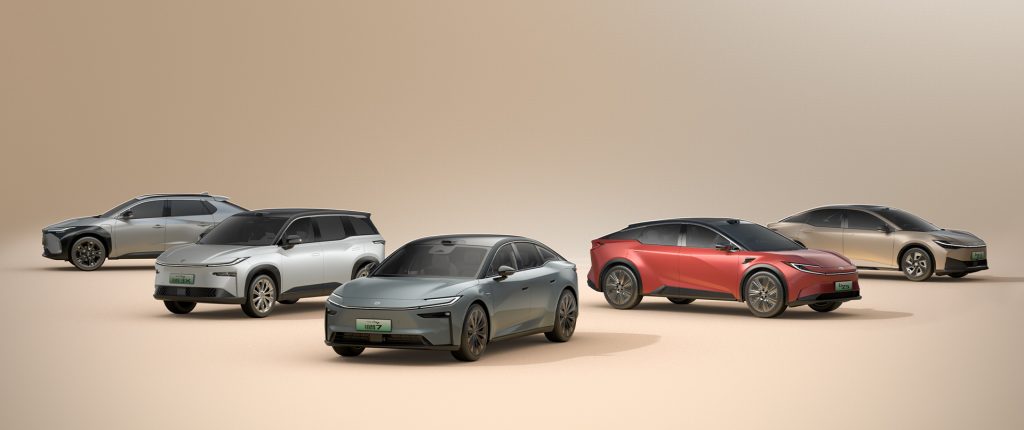
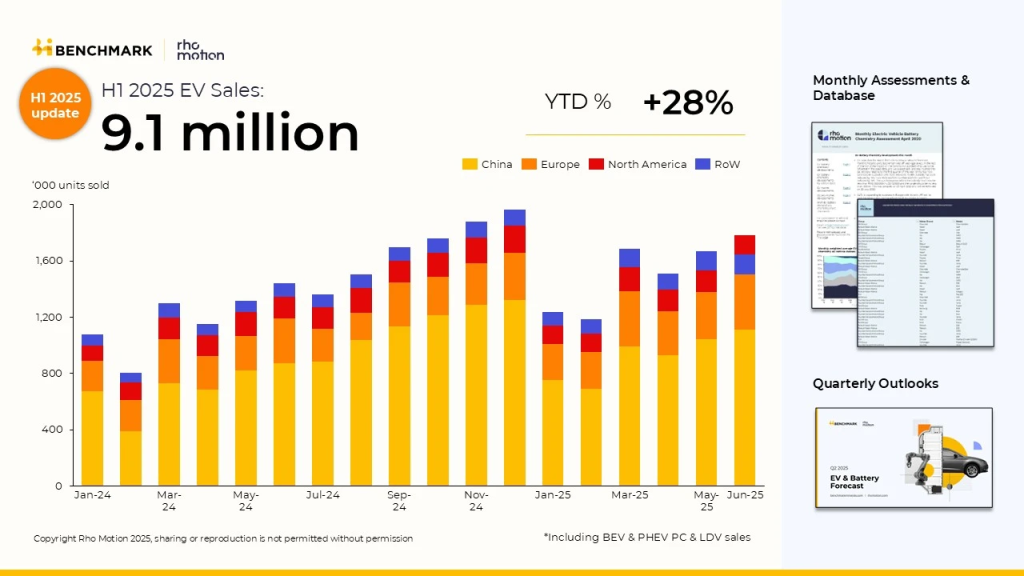

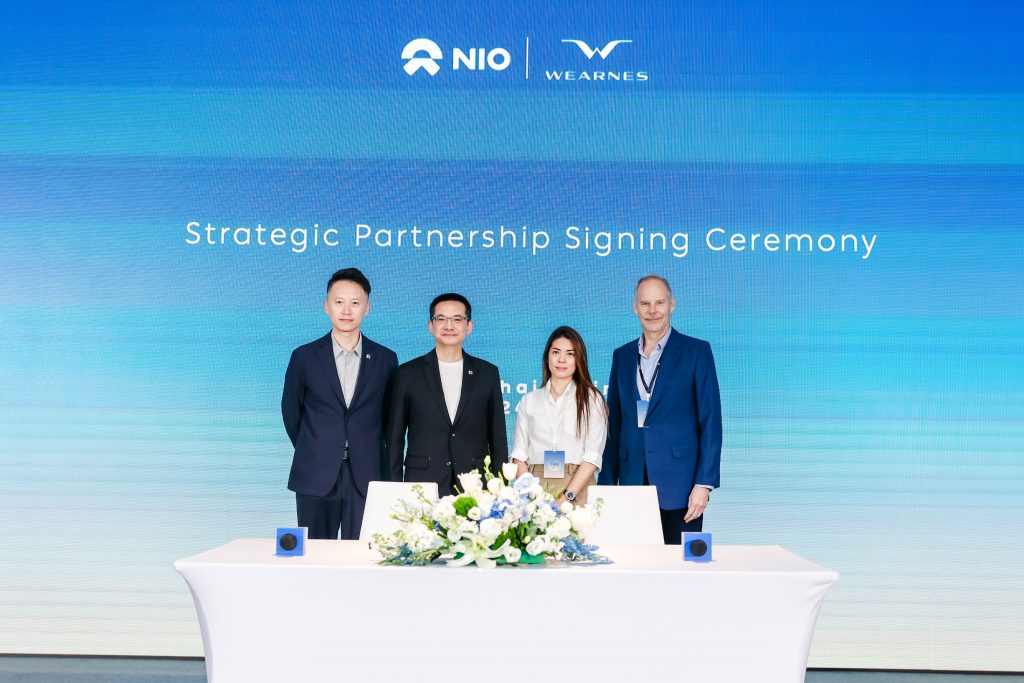
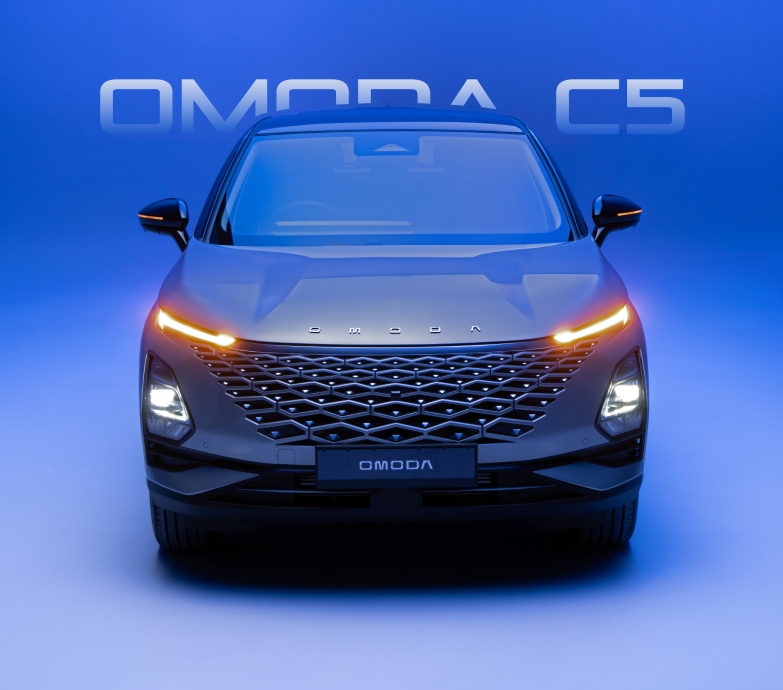
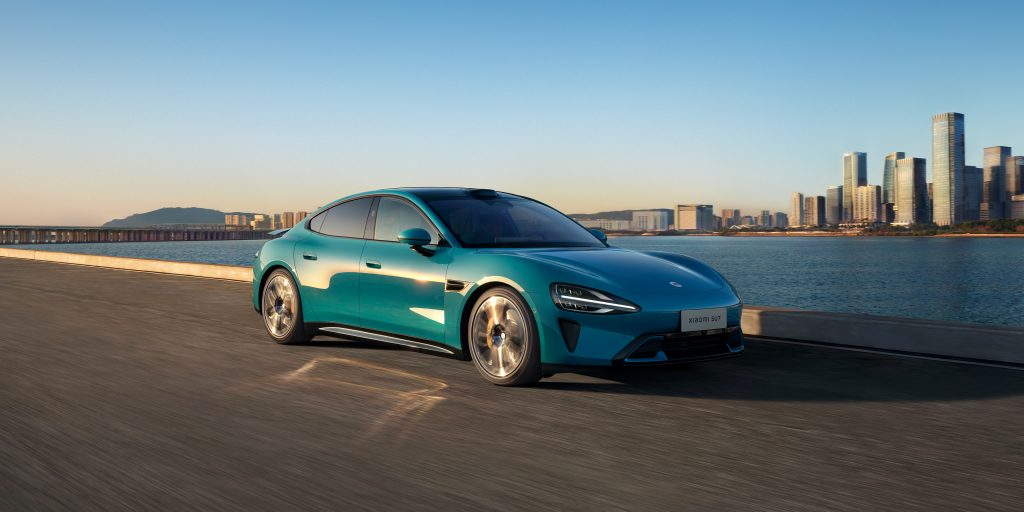
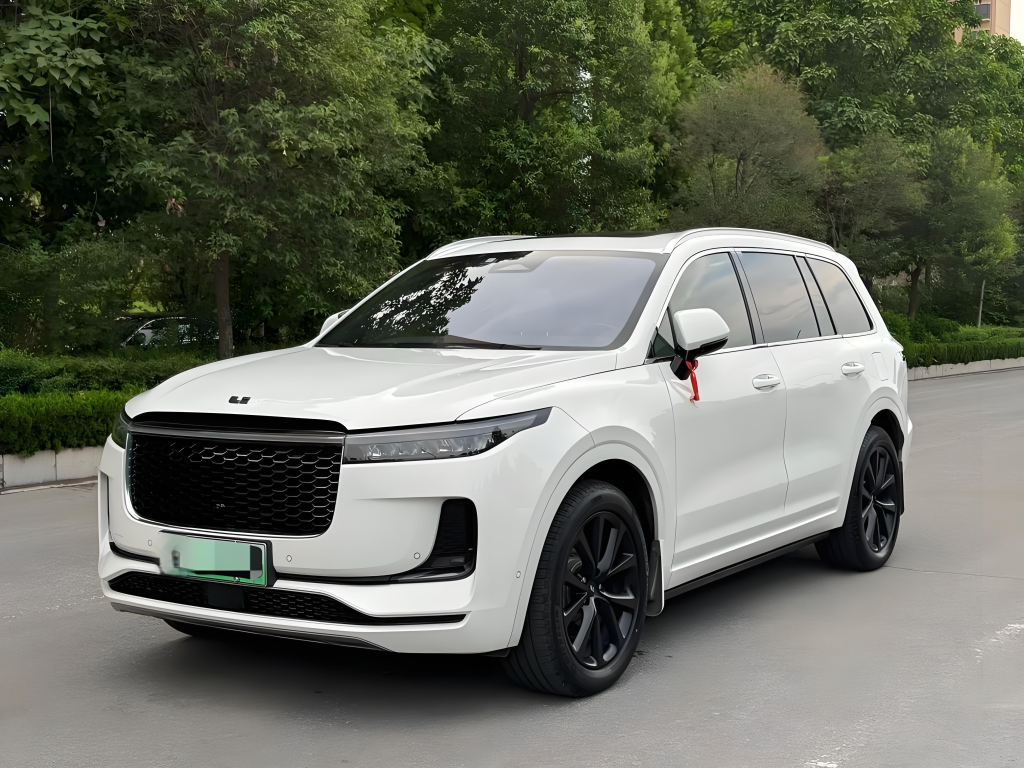
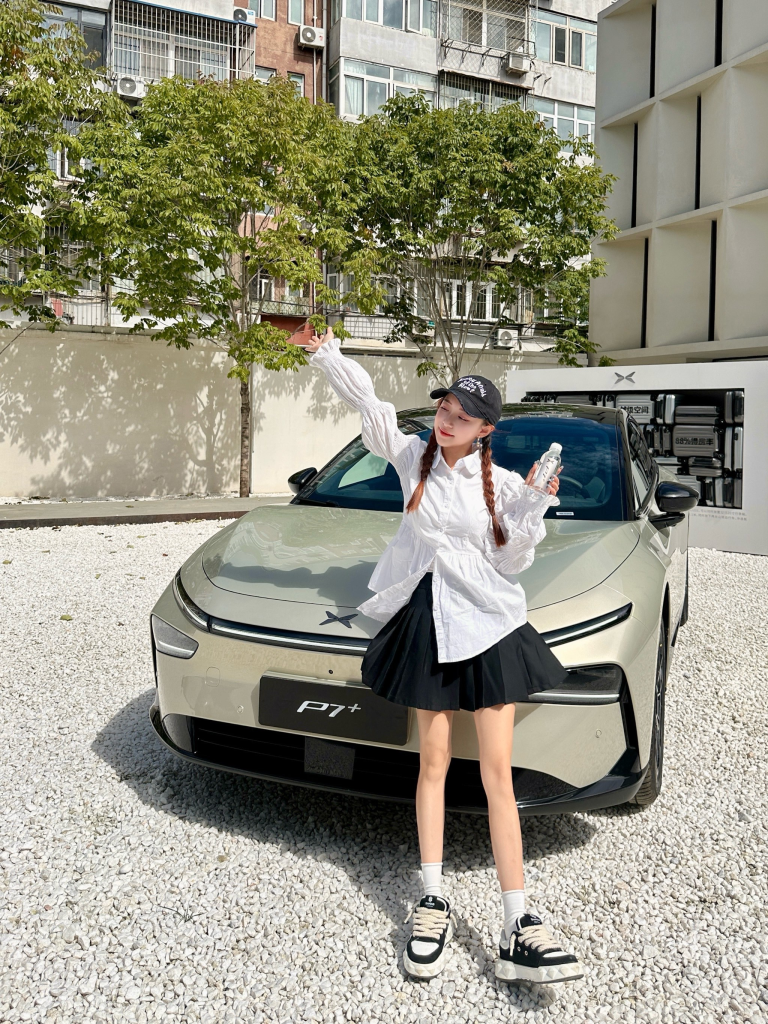

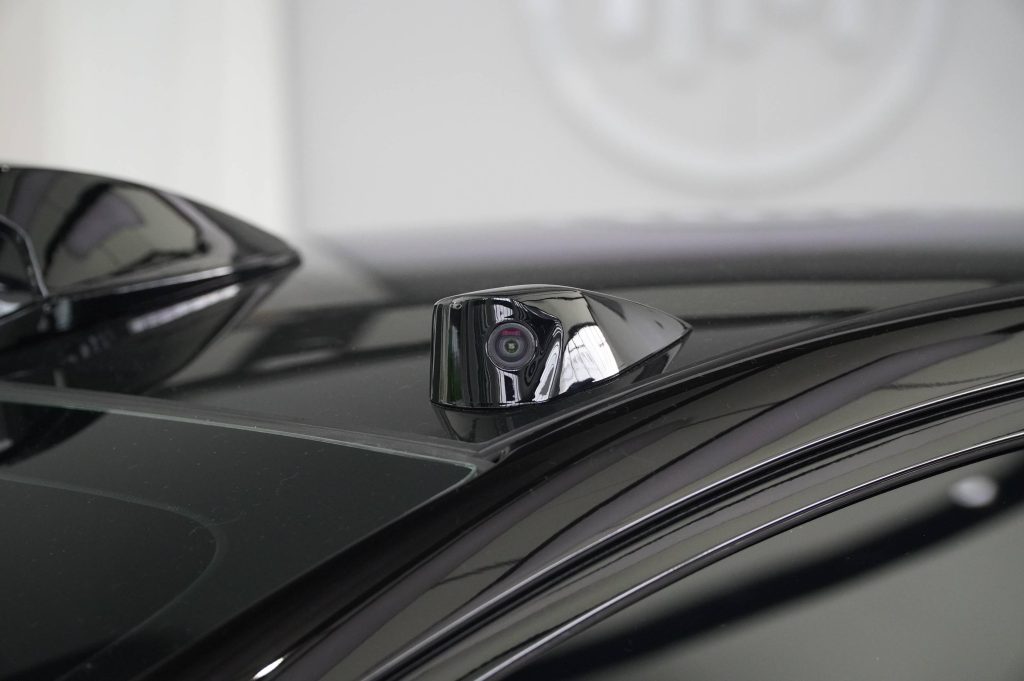

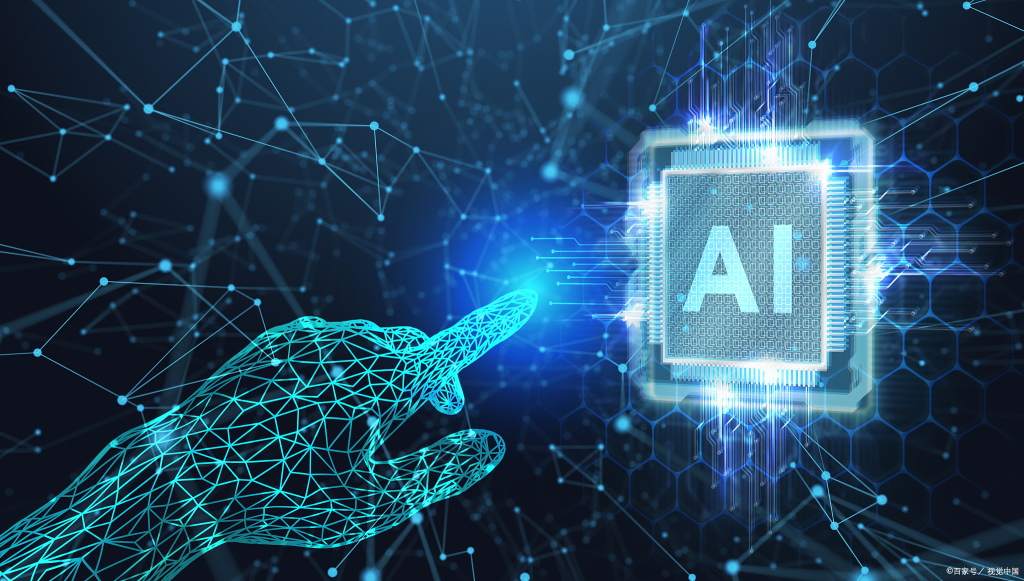

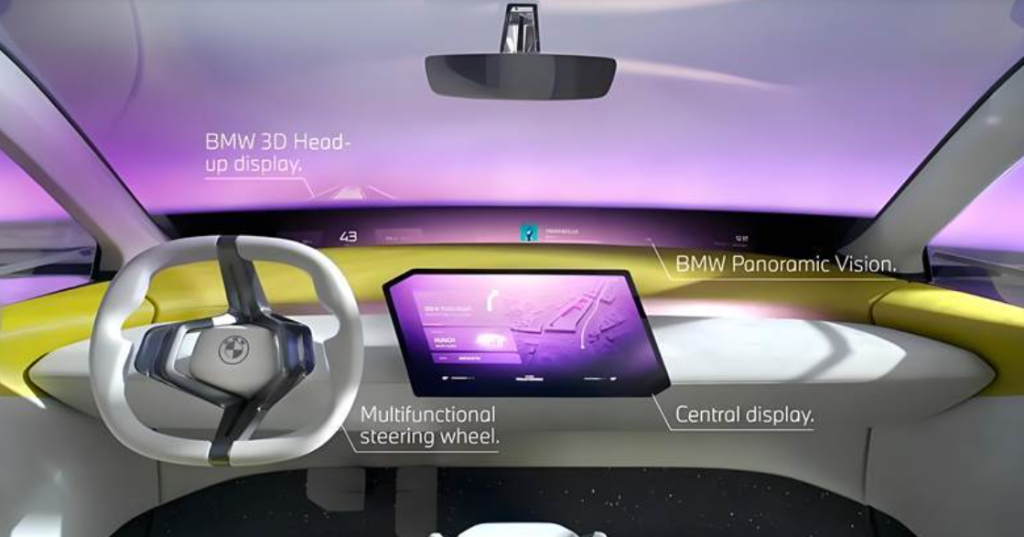

![[CONSUMER INSIGHTS] WHAT SHOULD CHINA LUX. NEVS LOOK LIKE?](http://www.zingevs.com/wp-content/uploads/2025/07/DM_20250705201845_001-1024x514.jpeg)
